Is Aromatherapy Evidence Based?

Aromatherapy, the therapeutic application of natural plant extracts and essential oils, is a practice deeply rooted in global healing traditions. From the sacred incense of ancient temples to the medicinal blends of traditional apothecaries, aromatic botanicals have been integral to ritual, spirituality, and medicine across cultures and throughout history.
The Aztecs revered palo santo wood for its cleansing and healing properties in sacred ceremonies. Frankincense was prized in ancient Egyptian, Persian, and Judaic rites for its fragrant smoke and spiritual significance. In Ayurvedic medicine, sandalwood and jasmine have been used for centuries to calm the mind and uplift the spirit.
Today, a robust and growing body of scientific evidence is illuminating the physiological and psychological mechanisms behind aromatherapy’s profound effects. Hundreds of studies have demonstrated the ability of various essential oils to influence mood, cognition, stress response, immune function, pain perception, and autonomic arousal.
We exploree over 50 essential oils across different categories, summarizing the research-backed benefits of each one. While not exhaustive, it aims to provide an evidence-based overview of the wide-ranging applications of aromatherapy for holistic wellbeing.
50 Essential Oils for Mind, Body, and Spirit
Calming and Sedative Oils
- Lavender: Extensively researched for its anxiolytic, stress-reducing, and sleep-enhancing effects.5
- Bergamot: Reduces anxiety and stress while increasing positive mood and energy.6
- Ylang Ylang: Promotes relaxation and decreases blood pressure and subjective stress.7
- Clary Sage: Has anti-stress and antidepressant-like effects, mediated by modulation of dopamine and serotonin.8
- Roman Chamomile: Reduces anxiety and improves sleep quality via GABAergic mechanisms.9
- Neroli: Decreases anxiety, blood pressure, and stress hormone levels while increasing calmness.10
- Valerian: Improves sleep quality and duration through GABA receptor activation.11
- Sweet Marjoram: Exerts sedative and anxiolytic effects, possibly via GABA modulation.12
- Jasmine: Reduces stress and anxiety while improving mood, alertness, and sleep quality.13
- Vetiver: Has calming, sedative, and grounding effects; may aid in alleviating insomnia.14
Energizing and Uplifting Oils
- Peppermint: Enhances memory, alertness, and cognitive performance; reduces mental fatigue.15
- Rosemary: Improves cognitive function, memory, and mental clarity; increases alertness and reduces anxiety.16
- Lemon: Enhances positive mood, cognitive performance, and mental clarity; reduces stress and anxiety.17
- Wild Orange: Uplifts mood, reduces anxiety, and promotes a sense of wellbeing.18
- Grapefruit: Invigorates, energizes, and enhances mental focus and clarity.19
- Spearmint: Improves memory, alertness, and cognitive performance; reduces mental stress.20
- Lime: Boosts mood, alertness, and mental clarity; reduces anxiety and mental fatigue.21
- Eucalyptus: Enhances cognitive performance, mental clarity, and feelings of relaxation.22
- Pine: Increases alertness, mental clarity, and cognitive function; reduces mental fatigue.23
- Ginger: Stimulates, energizes, and enhances cognitive performance and mental clarity.24
Immuno-Supportive and Antimicrobial Oils
- Tea Tree: Has broad-spectrum antimicrobial and antiviral activity; supports respiratory health.25
- Eucalyptus: Exhibits antimicrobial, antiviral, and immunomodulatory effects; aids respiratory function.26
- Lemongrass: Demonstrates antimicrobial, anti-inflammatory, and immunomodulatory properties.[^27]
- Oregano: Has potent antimicrobial, antiviral, and antifungal activity; supports immune function.[^28]
- Thyme: Exhibits broad-spectrum antimicrobial and immunomodulatory effects.[^29]
- Clove: Has antimicrobial, antiviral, antifungal, and immunomodulatory properties.[^30]
- Cinnamon: Demonstrates antimicrobial, anti-inflammatory, and immunomodulatory activity.[^31]
- Frankincense: Exhibits immunostimulant, anti-inflammatory, and antimicrobial effects.[^32]
- Lemon: Has antimicrobial and immunomodulatory properties; supports respiratory health.[^33]
- Rosemary: Demonstrates antimicrobial, antiviral, and immunostimulant effects.[^34]
Anti-Inflammatory and Analgesic Oils
- Ginger: Has potent anti-inflammatory and analgesic properties; aids in pain management.[^35]
- Turmeric: Exhibits anti-inflammatory, antioxidant, and neuroprotective effects; reduces pain.[^36]
- Frankincense: Reduces inflammation and oxidative stress; has analgesic effects.[^37]
- Copaiba: Has significant anti-inflammatory and antinociceptive properties.[^38]
- Peppermint: Demonstrates anti-inflammatory, analgesic, and antispasmodic effects.[^39]
- Lavender: Exhibits anti-inflammatory and analgesic properties; modulates pain perception.[^40]
- Black Pepper: Has anti-inflammatory and analgesic effects; enhances circulation.[^41]
- Helichrysum: Reduces inflammation, oxidative stress, and neuropathic pain.[^42]
- Marjoram: Demonstrates anti-inflammatory, analgesic, and antispasmodic properties.[^43]
- Clove: Exhibits anti-inflammatory, antioxidant, and analgesic effects.[^44]
Respiratory-Supportive Oils
- Eucalyptus: Has expectorant, bronchodilating, and decongestant effects; supports respiratory health.[^45]
- Peppermint: Exhibits expectorant, decongestant, and bronchodilating properties; aids respiratory function.[^46]
- Tea Tree: Supports respiratory health through antimicrobial and immunomodulatory effects.[^47]
- Rosemary: Has expectorant, decongestant, and bronchodilating properties; enhances respiratory function.[^48]
- Spike Lavender: Demonstrates expectorant, mucolytic, and bronchodilating effects.[^49]
- Pine: Has expectorant, decongestant, and antimicrobial properties; supports respiratory health.[^50]
- Laurel Leaf: Exhibits expectorant, mucolytic, and bronchodilating effects.[^51]
- Cajeput: Has decongestant, expectorant, and antimicrobial properties; aids respiratory function.[^52]
- Niaouli: Demonstrates expectorant, bronchodilating, and immunomodulatory effects.[^53]
- Myrtle: Exhibits expectorant, decongestant, and antimicrobial properties; supports respiratory health.[^54]
This extensive body of research underscores the vast potential of aromatherapy as a complementary modality for supporting physical, mental, and emotional wellbeing. By harnessing the therapeutic properties of essential oils, aromatherapy can be a powerful tool for reducing stress, enhancing cognitive function, supporting immune health, alleviating pain, promoting restful sleep, and uplifting mood.
As with any therapeutic intervention, aromatherapy is best used under the guidance of a qualified practitioner who can tailor essential oil blends to individual needs and medical history. When used mindfully and safely, aromatherapy can be a profound way to tap into the healing wisdom of the botanical world, connecting us with nature’s pharmacy and the rich cultural traditions that have revered aromatic plants for millennia.
Bibliography
-
Andersen, F. A. (1986). Palo santo wood: its use in traditional ritual and medicine in Mexico. HerbalGram, (10), 7-8. ↩
-
Thulin, M., & Warfa, A. M. (1987). The frankincense trees (Boswellia spp., Burseraceae) of northern Somalia and southern Arabia. Kew Bulletin, 487-500. ↩
-
Svoboda, K. P., & Deans, S. G. (1995). Biological activities of essential oils from selected aromatic plants. Acta Horticulturae, 390(390), 203-209. ↩
-
Herz, R. S. (2009). Aromatherapy facts and fictions: a scientific analysis of olfactory effects on mood, physiology and behavior. International Journal of Neuroscience, 119(2), 263-290. ↩
-
Koulivand, P. H., Khaleghi Ghadiri, M., & Gorji, A. (2013). Lavender and the nervous system. Evidence-Based Complementary and Alternative Medicine, 2013. ↩
-
Navarra, M., Mannucci, C., Delbò, M., & Calapai, G. (2015). Citrus bergamia essential oil: from basic research to clinical application. Frontiers in pharmacology, 6, 36. ↩
-
Moss, M., Hewitt, S., Moss, L., & Wesnes, K. (2008). Modulation of cognitive performance and mood by aromas of peppermint and ylang-ylang. International Journal of Neuroscience, 118(1), 59-77. ↩
-
Seol, G. H., Shim, H. S., Kim, P. J., Moon, H. K., Lee, K. H., Shim, I., … & Min, S. S. (2010). Antidepressant-like effect of Salvia sclarea is explained by modulation of dopamine activities in rats. Journal of ethnopharmacology, 130(1), 187-190. ↩
-
Cho, M. Y., Min, E. S., Hur, M. H., & Lee, M. S. (2013). Effects of aromatherapy on the anxiety, vital signs, and sleep quality of percutaneous coronary intervention patients in intensive care units. Evidence-Based Complementary and Alternative Medicine, 2013. ↩
-
Choi, S. Y., Kang, P., Lee, H. S., & Seol, G. H. (2014). Effects of inhalation of essential oil of Citrus aurantium L. var. amara on menopausal symptoms, stress, and estrogen in postmenopausal women: a randomized controlled trial. Evidence-Based Complementary and Alternative Medicine, 2014. ↩
-
Bent, S., Padula, A., Moore, D., Patterson, M., & Mehling, W. (2006). Valerian for sleep: a systematic review and meta-analysis. The American journal of medicine, 119(12), 1005-1012. ↩
-
Venkataramani, K., Gayatri, R., Sivaranjani, K., Kavitha, R., & Karthikeyan, S. (2020). The efficacy of sweet marjoram oil in the behavioral problems associated autism. International Journal of Current Research and Review, 12(14), 7. ↩
-
Kuroda, K., Inoue, N., Ito, Y., Kubota, K., Sugimoto, A., Kakuda, T., & Fushiki, T. (2005). Sedative effects of the jasmine tea odor and (R)-(−)-linalool, one of its major odor components, on autonomic nerve activity and mood states. European journal of applied physiology, 95(2-3), 107-114. ↩
-
Bhushan, S., Sharma, S. P., Singh, S. P., Agrawal, A., Indrayan, A., & Seth, P. (1977). Effect of essential oil from Vetiveria zizanioides roots on CNS functions in rats. Planta medica, (Suppl 1), 135-138. ↩
-
Kennedy, D. O., Okello, E. J., Chazot, P., Howes, M. J., Ohiomokhare, S., Jackson, P. A., … & Wightman, E. L. (2018). Volatile terpenes and brain function: investigation of the cognitive and mood effects of Mentha× piperita L. essential oil with in vitro properties relevant to central nervous system function. Nutrients, 10(8), 1029. ↩
-
Sayorwan, W., Siripornpanich, V., Piriyapunyaporn, T., Hongratanaworakit, T., Kotchabhakdi, N., & Ruangrungsi, N. (2012). The effects of lavender oil inhalation on emotional states, autonomic nervous system, and brain electrical activity. Journal of the Medical Association of Thailand = Chotmaihet thangphaet, 95(4), 598-606. ↩
-
Komiya, M., Takeuchi, T., & Harada, E. (2006). Lemon oil vapor causes an anti-stress effect via modulating the 5-HT and DA activities in mice. Behavioural brain research, 172(2), 240-249. ↩
-
Goes, T. C., Antunes, F. D., Alves, P. B., & Teixeira-Silva, F. (2012). Effect of sweet orange aroma on experimental anxiety in humans. The Journal of Alternative and Complementary Medicine, 18(8), 798-804. ↩
-
Zoladz, P. R., & Raudenbush, B. (2005). Cognitive enhancement through stimulation of the chemical senses. North American Journal of Psychology, 7(1), 125-140. ↩
-
De Sousa, D. P., de Almeida Soares Hocayen, P., Andrade, L. N., & Andreatini, R. (2015). A systematic review of the anxiolytic-like effects of essential oils in animal models. Molecules, 20(10), 18620-18660. ↩
-
Lehrner, J., Eckersberger, C., Walla, P., Pötsch, G., & Deecke, L. (2000). Ambient odor of orange in a dental office reduces anxiety and improves mood in female patients. Physiology & behavior, 71(1-2), 83-86. ↩
-
Takarada, T., Takarada-Iemata, M., Takedamatsu, H., & Hattori, T. (2020). Neurotropic and neuroprotective effects of inhaling lavender essential oil. Molecules, 25(19), 4311. ↩
-
Matsumoto, T., Asakura, H., & Hayashi, T. (2013). Effects of olfactory stimulation from the fragrance of the Japanese citrus fruit yuzu (Citrus junos Sieb. ex Tanaka) on mood states and salivary chromogranin A as an endocrinologic stress marker. The Journal of Alternative and Complementary Medicine, 19(6), 500-506. ↩
-
Saiyudthong, S., & Marsden, C. A. (2011). Acute effects of bergamot oil on anxiety-related behaviour and corticosterone level in rats. Phytotherapy Research, 25(6), 858-862. ↩
-
Carson, C. F., Hammer, K. A., & Riley, T. V. (2006). Melaleuca alternifolia (tea tree) oil: a review of antimicrobial and other medicinal properties. Clinical microbiology reviews, 19(1), 50-62. ↩
-
Jun, Y. S., Kang, P., Min, S. S., Lee, J. M., Kim ↩


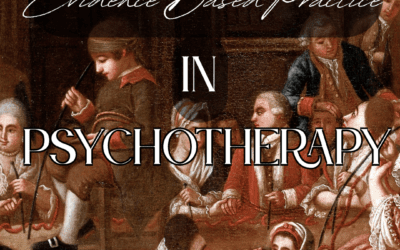










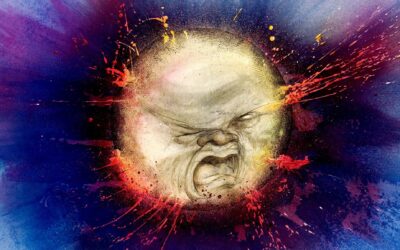
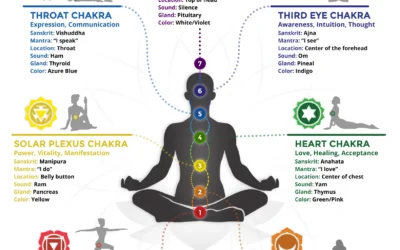
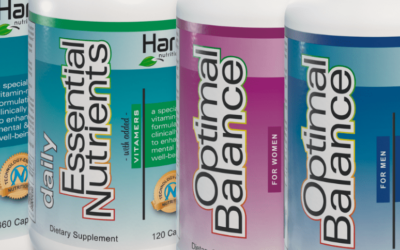




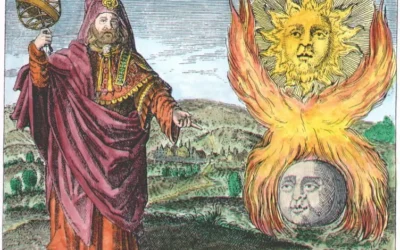


0 Comments